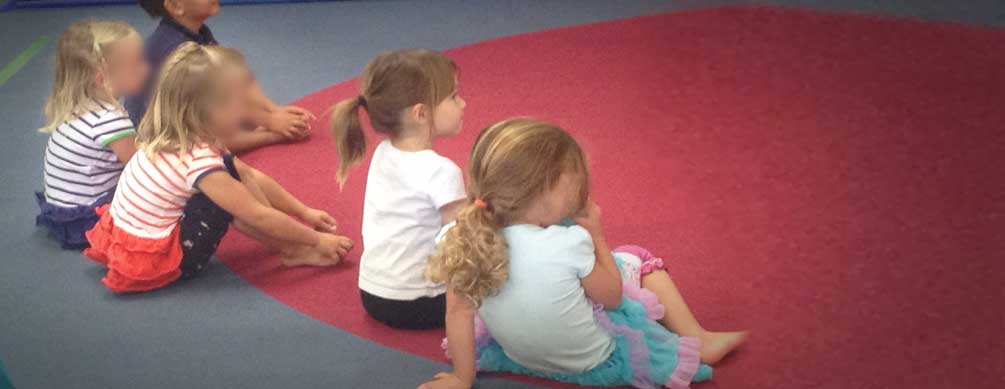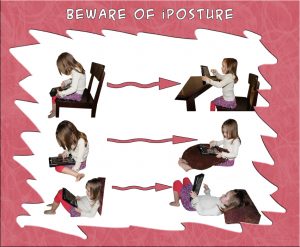

When babies first learn to sit they naturally lengthen the spine. This is the position that requires the least muscle strength. Babies are essentially balancing in the sitting position as opposed to holding themselves there, which means their muscles are relaxed and their bones are holding them up.
The 4 year-old slump
Around preschool age most children begin to slump. This is most likely due to a combination of influences: adults modeling bad posture, spending more time sitting, and unsupportive furniture.
The photo at the top of this page shows five children sitting in class. Four of them are exhibiting the typical preschool posture, which is juxtaposed by the girl in proper alignment. She is anchored on her sitz bones, while all of the other children are rounding their backs and sitting on the back of the pelvis.
What should I say to my child?
Children are eager to learn about their bodies and often respond well to gentle posture guidance. For example, I tell my preschool aged daughter to always pretend like she is wearing a princess crown so that she extends her neck upwards and keeps her head balanced.
Showing children pictures of good an bad alignment can go a long way. Once they can identify the difference between good and bad posture in others they can start to feel it in their own bodies. Once they understand that bad posture is ugly and unhealthy they will be motivated.
If they know where their sitz bones are and know how to elongate the spine they will have more physical stamina and less pain throughout life. But be careful that you aren’t simply telling them to sit up straight. Having an anchored pelvis, a stacked spine, a long neck, a balanced head and a quality of relaxation. Erect posture that comes from a place of tension is not healthy.
Be a role model
Children naturally imitate the behavior of adults around them. If you care about your posture, so will your children. But that isn’t the only reason to take care of your own posture, you will be a more energetic and pain-free parent as a result. Children make excellent “posture buddies”. You and your child can learn about the benefits of good posture together and help each other from falling back into bad habits.
